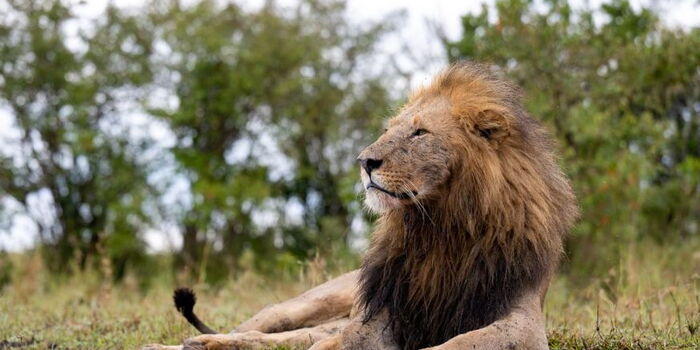Olobor: The "Sister Killer" Lion of Maasai Mara – A Tale of Power and Tragedy

Created on February 22, 2025
The Maasai Mara, known for its vast savannahs and legendary lion prides, has witnessed many dramatic tales of survival, power struggles, and territorial dominance. Among these, one lion's story stands out—Olobor, the "Sister Killer." His rise to power, brutal past, and ultimate fate make for one of the most riveting sagas in the wild.
Who Was Olobor?
Olobor was a powerful male lion from the Marsh Pride, one of the most famous lion prides in the Maasai Mara. With his imposing frame, striking mane, and fierce demeanor, he quickly rose through the ranks, asserting dominance over his rivals. However, it was his shocking act of killing his own sister that earned him the infamous nickname, The Sister Killer.

Why Was He Called the "Sister Killer"?
In the complex world of lion prides, hierarchy, and survival often dictate behavior. Male lions have been known to commit infanticide—killing cubs that are not their own—to establish dominance and bring lionesses back into estrus. However, Olobor's case was different.
Olobor gained notoriety when he was observed killing a female lion, believed to be his own sister, during a territorial dispute or power struggle. While the exact reasons remain unclear, wildlife experts speculate that the conflict may have been due to dominance disputes, mating rights, or an instinctive reaction to aggression. This rare and shocking behavior cemented his reputation as a ruthless ruler in the Mara.
Olobor’s Rise to Power
Following this incident, Olobor continued to assert his dominance. He formed an alliance with other males, securing vast territories and controlling large prides. His presence was feared and respected, and he played a key role in keeping rival coalitions at bay.
As part of the Marsh Pride, Olobor became one of the most photographed and documented lions in the Maasai Mara. Safari-goers and wildlife enthusiasts followed his movements closely, eager to witness the reign of a lion who defied the norms of social behavior in the wild.
What Happened to Olobor?
As with many dominant lions, power is never permanent in the wild. Over time, Olobor faced challenges from younger, stronger coalitions. As he aged, his dominance waned, and rivals sought to overthrow him. Recent reports suggest that Olobor eventually lost control of his territory and was pushed out by younger, more aggressive males.
His final fate remains uncertain—some speculate he succumbed to injuries sustained in battles, while others believe he wandered into the wilderness, living out his remaining days in isolation, as many dethroned kings of the wild do.
Legacy of Olobor
Olobor’s story is a stark reminder of the brutal realities of life in the wild. While his actions may seem ruthless from a human perspective, they are part of the intricate and often unforgiving cycle of nature. His legacy lives on through documentaries, photographs, and the memories of those who witnessed his reign.
For those visiting the Maasai Mara, the spirit of Olobor lingers—an eternal symbol of the untamed, raw power that defines Africa’s greatest wilderness.
Experience the Wild for Yourself!
Want to witness the drama of the Maasai Mara unfold before your eyes? Book a safari with Mojok Safari Solutions and get up close with the legendary lions of Africa.
📍 Explore. Witness. Remember.


